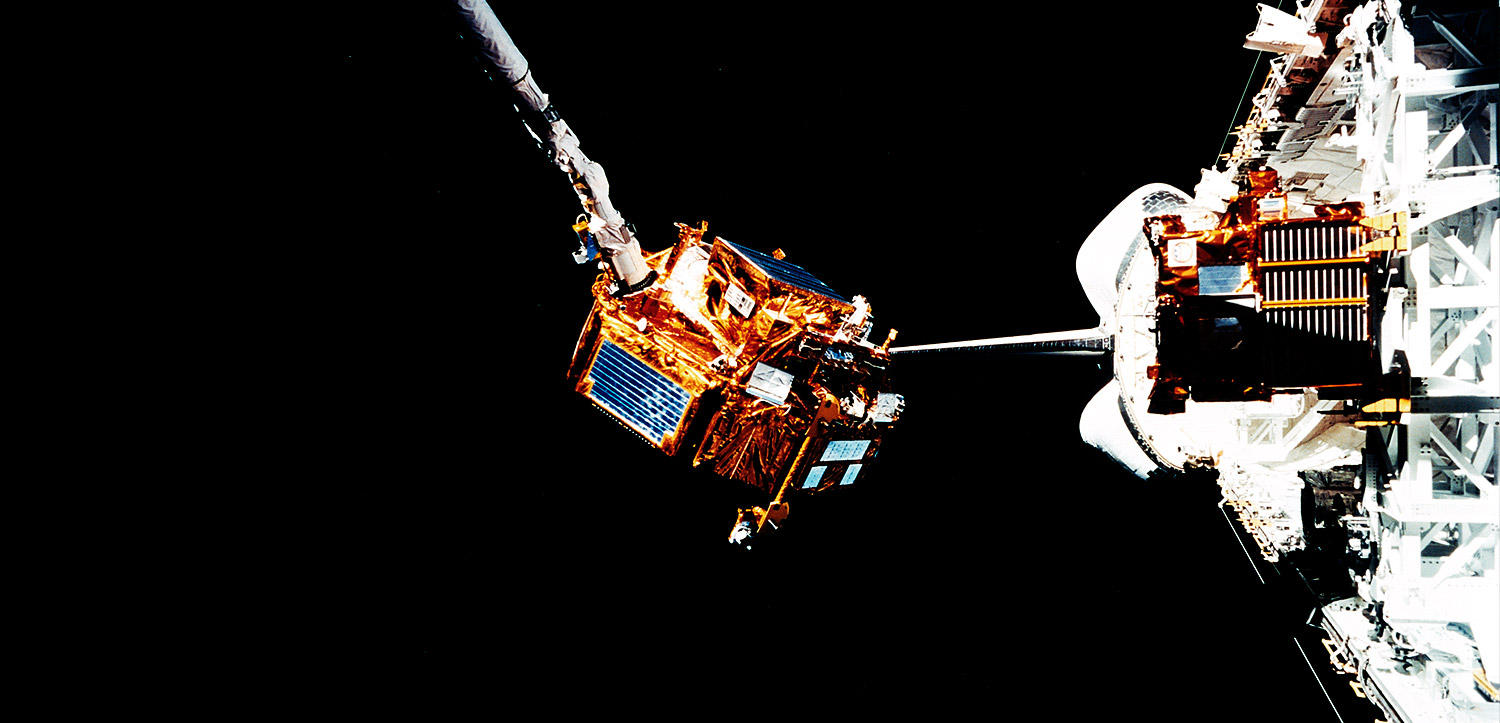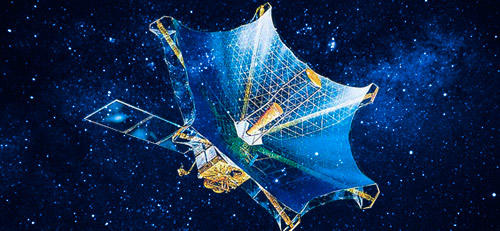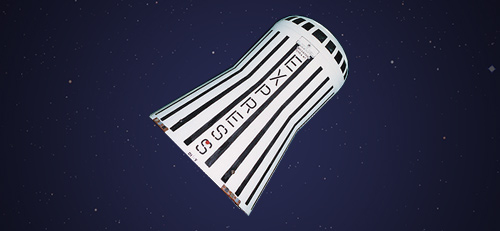| Name | SFU |
|---|---|
| International Designation code | 1995-011A |
| Objectives | 1.Verify the effectiveness of retrieval and reuse system by conducting launch, in-orbit experiments and retrieval. 2.Conduct scientific and engineering experiments and astronomical observations in orbit. |
| Launch Date | 17:01, March 18, 1995 (JST) |
| Launch Location | Tanegashima Space Center |
| Launch Vehicle | H-II Rocket (Test Vehicle No.3) |
| Weight | Approx. 4,000 kg |
| Dimensions | Approx. 4.7m diameter x approx. 2.8m high excluding solar-array paddle |
| Orbital Altitude | Perigee 300 km, Apogee 500 km |
| Orbital Inclinarion | 28.5° |
| Type of Orbit | Phase-synchronized orbit |
| Orbital Period | Approx. 90 min |
| Attitude Control Method | Three-axis stabilized attitude control (zero momentum) |
| Retrieval Date | January 13, 1996 |
| Retrieval method | U.S. Space Shuttle (STS-72) |
| Landing site | NASA Kennedy Space Center (January 20, 1996) |
| Scientific Instruments | ・Former ISAS IRTS (Infrared Telescope in Space) 2DSA (Two Dimensional Solar Array Experiments) HVSA (High Voltage Solar Array Experiment) SPDP (Space Plasma Diagnostic Package) EPEX (Electric Propulsion Experiment) MEX (Material Experiment in Space) BIO (Space Biology Experiment) ・Former NASDA EFFU (Exposed Facility Flyer Unit) GDEF (Gas Dynamic Experiment Facility) ・USEF GHF (Gradient Heating Furnace Experiment) MHF (Mirror Heating Furnace Experiment) IHF (Isothermal Heating Furnace Experiment) |
| Operation | The solar-array paddle (SAP) was deployed after launch and insertion into orbit at an altitude of 330km. By March 23, the orbital altitude was raised to 486km where the missions were performed. The rendezvous was changed from the initially planned control-box method to the ground-up method because the Space Shuttle STS-72 had enough fuel making it possible for the orbiter to approach closely to the SFU. Two weeks before the Shuttle's launch, a failure was detected in two thrusters of the Reentry Control System (RCS). The SFU's attitude orienting to the Sun was restored by using other thrusters and maintained by reaction wheel and magnetic torquer. Later, 10 thrusters were secured for the retrieval operation. STS-72 (Endeavour) was launched on January 11, 1996, and entered into orbit at an altitude of 472km where retrieval was planned. Retrieval was conducted near the orbiter during four orbital revolutions on January 13. Stowing the two solar-paddle arrays (SAP) started at 22:28 on the first day of Mission Elapsed Time (MET), but the operation failed since there was no stowing-verification signal. After three attempts to unfold and fold the SAP, stowing was eventually abandoned. The SFU was finally grasped by the remote manipulator system (RMS) operated by Japanese astronaut Koichi Wakata and stowed in the orbiter's cargo bay. The STS-72 returned to the Kennedy Space Center on January 20. |
| Results | ISAS obtained a number of observation results with the following mission instruments. IRTS (Infrared Telescope in Space) 2DSA (Two Dimensional Solar Array Experiments) HVSA (High Voltage Solar Array Experiment) SPDP (Space Plasma Diagnostic Package) EPEX (Electric Propulsion Experiment) MEX (Material Experiment in Space) BIO (Space Biology Experiment) |



